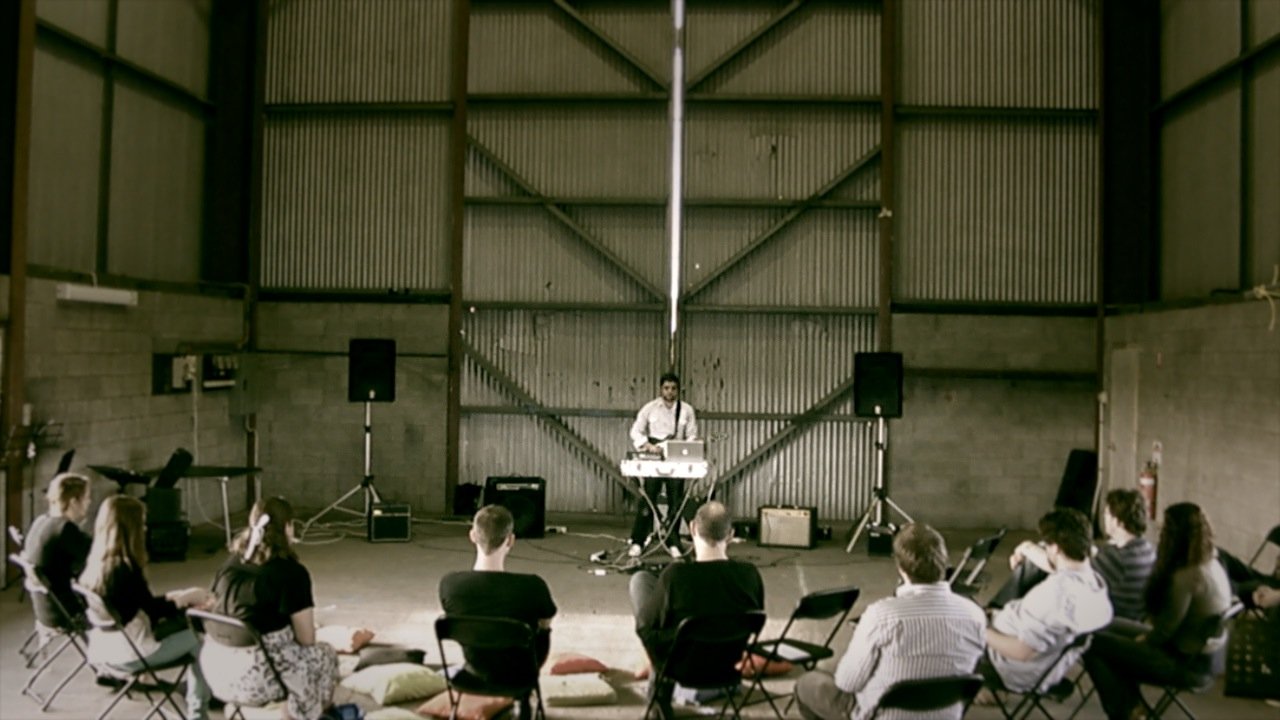On Rainy Days Be in the Rain, On Windy Days, Be in the Wind (2012)
Instrumentation: Solo Guitar, Electronics, 5 Guitar Amps
Duration: 22:00
Call for Scores Selection: Under_scored festival of new music
Premiere: Chris Perren at Under_scored Festival of New Music, January 2012
Additional Performances: Chris Perren at ECHOoOOoOOOo concert, November 2014; Chris Perren at UQ Art Museum Concert, 4 November 2020.
Premiere performance at Under_scored Festival of New Music, January 2012.
Livestream Concert featuring "On Rainy Days Be in the Rain, On Windy Days, Be in the Wind" presented by UQ School of Music and UQ Art Museum. This performance of the work sadly loses the spatialisation and tonal variance of the multiple guitar amps, due to the live-streamed medium.
Excerpt from PhD Thesis discussing the work:
On Rainy Days is a three-movement work for a solo electric guitar, 5 guitar amps, voice, and a specific configuration of delay effects. Given my conviction that compositional decisions are driven by media choice, it follows that in order to create a unique new work, one may simply create a unique new media environment, and move forward instinctively. On Rainy Days explores the idea that the majority of the compositional work could be in setting up an elaborate and unusual system of rules and boundaries, and the content is created simply by playfully exploring within it.
This work operates within a basic technological setup, involving one guitar, 5 guitar amps, and electronics. I have chosen to use as few signal processing elements as possible, in order to ensure the piece can be translatable for other performers. In contrast to some late 20th century electro-acoustic works which specify a particular array of obsolescing equipment models and settings, On Rainy Days only tells the performer what simple signal processing needs to be performed. The performer is free to use whatever is at his or her disposal to achieve this, whether it be a rack of studio outboard, a tangle of guitar effects pedals, or a neatly programmed Max/MSP patch.
The signal of the guitar is split into five switchable channels, and delay processes are performed on each of the channels. The delay must have feedback capability – that is, all or some of the delayed signal can be fed back into the delay input, making infinite looping possible. The output of the five channels are fed into five guitar amplifiers of any make or model. The amplifiers are spatially separated within the performance space, and preferably of different sizes and types for further timbral separation. The performer is required to sing the vocal part without the aid of a microphone.
The title of the work is a translation of a short poem by Japanese poet and calligrapher, Aida Mitsuo. The poem in its original Japanese appears in Movement III as lyrics. Aida’s poetry is rooted in the philosophy of Zen Buddhism, and this particular poem expresses the notion of experiencing reality exactly as it is, rather than the grasping activity of trying to enact change on ones environment. This is sometimes referred to as Tathagata or “suchness” (Suzuki, 73).
While an in-depth discussion of Zen Buddhist teachings is obviously beyond the scope of the present discussion, these ideas have been central to my thinking over the past few years, and have strongly influenced my compositions. When I first began to write On Rainy Days, the process became a sort of meditational tool. Each note played irreversibly becomes part of the ongoing texture – even the slightest sound on the strings is amplified and repeated. The activity of improvising in such an environment started to feel like a training ground for subtlety and restraint. One aim of Zen meditation is to train oneself out of the habit of constantly trying to effect change on the environment, and similarly in music I believe it is important to control our impulse to do more, add more, and play more, rather than allowing a sound to be what it is.
The piece consists of three movements. The first movement uses the delays to create a sort of canon, as a cycle of a fixed length is repeated one at a time in each amplifier. No delay feedback is used in this movement, as each amp simply plays back the input signal once, staggered by a set time delay. In the second movement the delay times are set very close to each other, creating a Reichian phasing effect, and the feedback is set quite high, allowing the delayed signal to loop and decay gradually over a long period. Finally the third movement explores short delays which loop infinitely (or until they are manually made to stop). The delay times are related by simple integer ratios, which creates polyrhythmic interplay between the layers.
To add to the unique limitations of the work, the score calls for the performer to sing, unmediated by a microphone. In keeping with the McLuhanist notions weaved throughout this project, I considered the decision to eschew the microphone – especially in the potentially noisy sonic environment of five guitar amps – to be of far more significance than any of the notes that I might prescribe the performer to sing. The decision itself is based on aesthetic preference for the directness of the unmediated human voice, and the heightened emotion which comes from pushing the volume of the voice to its limits. The actual melodic content of the vocal part is then largely influenced by the conditions imposed on the vocal delivery by the choice of media.
On Rainy Days is an example of a unique process which triggers creativity by setting up an unusually reactive environment within which the composer may explore. By taking the spotlight off the decisions about chords and melodies, I was able to compose in a natural, instinctive, unforced manner, whilst still producing a unique and innovative musical result.
